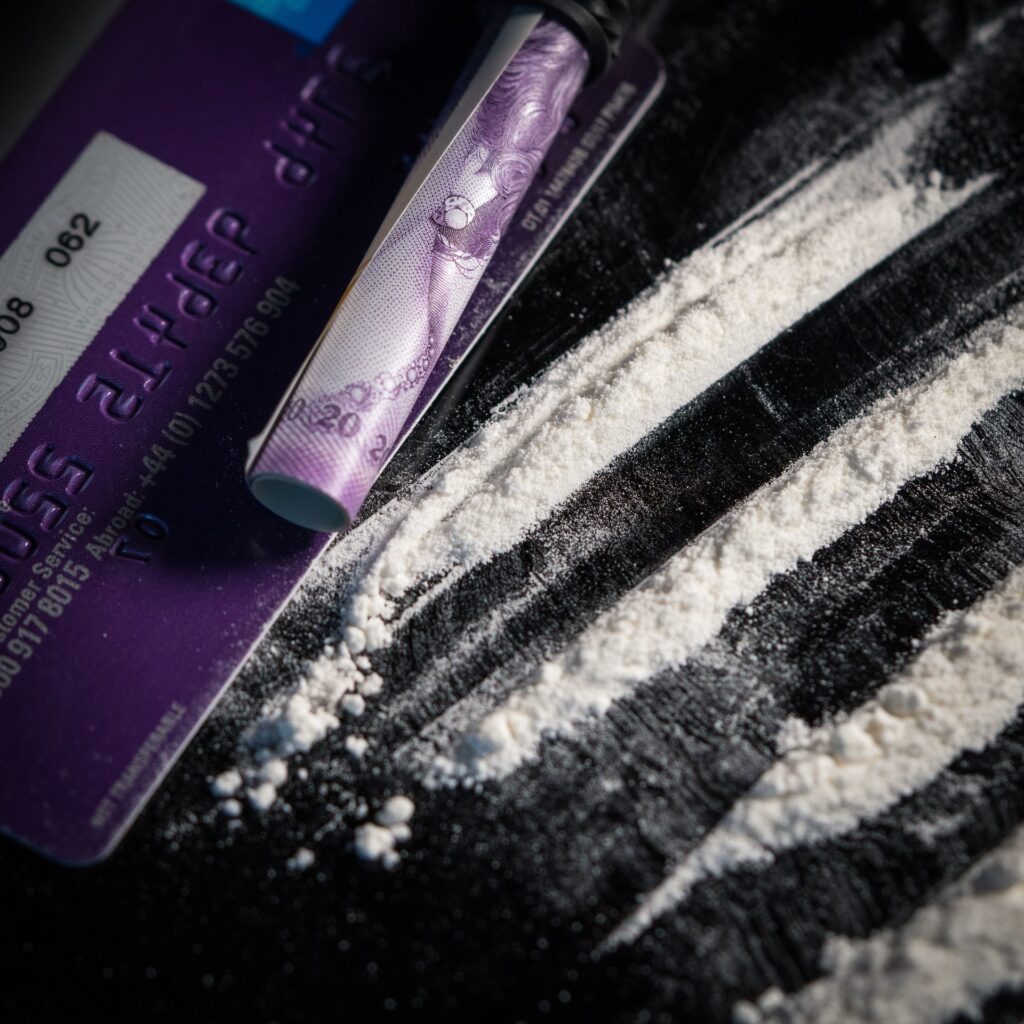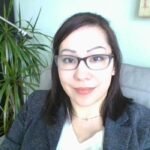Are you or someone you love struggling with cocaine use? Have you tried and failed to stop using the drug despite financial constraints, relationship problems, and health complications? Are you looking for answers but are not sure where to turn?
Many cocaine users go through similar struggles. Without warning, the drug takes over their lives. Even though they see their relationships, finances, and health deteriorate, the habit is impossible to break.
This is because cocaine is a highly addictive stimulant drug. And what many people don’t realize is that addiction is a mental illness just like depression, anxiety, bipolar, or schizophrenia. Fortunately, addiction can be managed and treated, and a sober life can be reclaimed, even by people with severe cocaine addictions.
Contacting our cocaine hotline can be the first important step in accessing the information, knowledge, and resources you need to finally stop using this powerful and addictive drug.
What Is Cocaine?
Cocaine is a highly addictive stimulant drug derived from the leaves of the coca plant. This plant is indigenous to South America and has been grown and used there for over 3,500 years. [1]
In 1855, Friedrich Gaedcke, a German chemist, became the first person to isolate purified cocaine from coca leaves. He named the substance “erythroxyline.” Four years later, a German graduate student, Albert Niemann, improved the extraction process and renamed the substance cocaine, which is the drug as we know it today.
Throughout the early 1900s, cocaine was used in elixirs and tonics to treat a wide variety of maladies, including sexual dysfunction, depression, and fatigue. It was even famously an ingredient in the earliest versions of Coca-Cola. Surgeons used the drug to block pain before safer anesthetics were developed.
In countries such as Colombia, Bolivia, and Peru, coca leaves continue to be chewed or added to teas to treat maladies such as altitude sickness and fatigue.
Cocaine is one of the most widely abused illegal drugs worldwide. Street names for cocaine include coke, blow, and powder. Crack cocaine (which is made by heating cocaine with baking soda to a smokeable form) is sold as candy, rocks, and base on the street.
The History and Regulation of Cocaine in the United States
Cocaine was initially developed as an anesthetic in 1884 by Koller for use in cataract operations. [2]
Even as cocaine was being developed as an anesthetic, many doctors hoped it would also provide a cure for people who were addicted to morphine. Morphine was freely given to soldiers during the Civil War and many of them became addicted to the drug. [3] Sigmund Freud recommended cocaine for use in treating melancholia and opiate addiction. [4]
Eventually, researchers discovered that cocaine had negative psychological effects which were worse with repeated use. By the 1920s, cocaine had become one of the most feared illicit drugs and many states around America enacted laws against its use. [5] President William Taft famously proclaimed cocaine as “Public Enemy No. 1.”
The first official regulation on cocaine in the United States came in 1906 with enactment of the Pure Food and Drug Act. This law required products that contained cocaine to mention it on the label. The Harrison Narcotics Tax Act of 1914 imposed further restrictions on cocaine use and the use of other drugs. It also banned physicians from prescribing cocaine and narcotic drugs to addicts.
It wasn’t until the Narcotics Drugs Import and Export Act of 1922 was enacted that cocaine was officially outlawed in the United States for any and all non-medical uses. It is currently listed as a Schedule II drug with a high potential for abuse. However, doctors sometimes use it for legitimate medical uses such as local anesthesia.
How Cocaine Works in the Body
Cocaine is a powerful drug that increases dopamine levels in the brain. Dopamine is a natural chemical that is known as the body’s pleasure molecule. It plays a key role in the brain’s reward system. Increased dopamine levels are largely responsible for the “high” that cocaine users experience. This chemical is what causes drug users to feel happy, energized, and euphoric when they take cocaine. [6]
Cocaine blocks specific proteins that are responsible for reabsorbing excess dopamine in the central nervous system, causing it to accumulate and creating a sense of euphoria or excessive happiness. Research conducted by the University of Colorado at Boulder shows that cocaine also binds to glial cells, which are specialized cells found in the central nervous system. [7]
The manner in which cocaine binds to brain cells causes an inflammatory response. This tricks the brain into releasing more dopamine. As a result, there is a continuous release of dopamine for up to 30 minutes after cocaine use. At this point, drug users often take more cocaine to sustain the euphoric effects. [8] [9]
Drugs like cocaine that significantly increase dopamine activate the reward centers in the brain. Over time, drug use causes a reward pathway to form in the brain (also called an addiction pathway), which creates strong drug cravings and makes it harder for the user to stop using the drug.
These combined effects on the brain explain how cocaine impacts dopamine levels so profoundly, and also why it is such an addictive substance. Because high levels of dopamine create intense pleasurable feelings, regular use of cocaine can rapidly develop into a psychological and physical dependence on the drug, which is called addiction.
The Forms of Cocaine
Cocaine is sold in two main forms: a white powder that’s usually snorted and a crystallized form called crack that’s typically smoked [10] Cocaine causes a rapid and powerful “high” that lasts for up to 30 minutes. Crack causes a much shorter high, lasting only about 5 minutes. Some people prefer crack because it is cheaper and because the high, though short, is more intense than the one obtained from powder cocaine.
As mentioned, the white-powder version of cocaine is made from dried and ground coca leaves which have been chemically treated to extract cocaine hydrochloride. This is a complicated process which involves the use of many solvents, some of which are highly toxic, including gasoline, sulfuric acid, and ammonia. While many of these chemicals are removed during the manufacturing process, cocaine often contains adulterants. This drug is also frequently cut with other white powders such as corn starch, baking soda, or sugar to dilute it and increase profits for drug dealers.
Crack cocaine is made by removing the hydrochloride salt from cocaine. This makes it possible to inhale the drug by smoking. The manufacture of crack cocaine involves heating a mixture of cocaine powder and baking soda to create a hard substance that can be broken into small pieces that resembles pellets. The name crack comes from the crackling sound that is heard when the drug is heated for the purpose of smoking.

Cocaine Overdose Deaths
Cocaine claims thousands of lives in the United States each year. Data collected by the National Institute on Drug Abuse shows that drug overdose deaths involving stimulants (cocaine and psychostimulants) rose sharply from around 12,000 in 2015 to over 53,000 in 2021. [11] The number of deaths involving cocaine specifically has increased steadily since 2015 with over 24,000 deaths in 2021.
The Effects of Cocaine Withdrawal
Cocaine is a highly addictive substance. People who develop a physical dependence on this stimulant drug experience a withdrawal syndrome when they attempt to stop taking it or do not have access to further doses of the drug. Withdrawal symptoms can occur when someone tries to quit cocaine use cold turkey or rapidly reduces the amount used after prolonged or heavy use. Heavy users of cocaine can even experience withdrawal symptoms before the drug is completely out of their system.
Cocaine withdrawal symptoms commonly include fatigue, discomfort, anxiety, depression, irritability, sleep problems, vivid or unpleasant dreams, agitation, paranoia, and slowing of activity [12]
When a person is using cocaine, the drug causes increased dopamine levels in the brain. When the drug is withdrawn, the lack of dopamine produces a strong craving for the drug, especially in people accustomed to regular cocaine use. The cocaine “crash” follows almost immediately after usage stops. This causes the brain to want more cocaine right away. This makes the withdrawal process challenging and staying off cocaine extremely difficult for regular users.
For people who are trying to quit cocaine, the first month is usually the most difficult period in their recovery. There are intense swings between highs and lows, drug cravings, paranoia, and anxiety. However, unlike withdrawal from alcohol or opioids, there aren’t that many physical symptoms associated with cocaine withdrawal, such as vomiting or shaking (delirium tremens). This is because cocaine is more psychologically addictive than physically addictive.
The severity of cocaine withdrawal symptoms depends on various factors, including the duration and severity of drug use, the method of use, and the person’s underlying health status. People who inject cocaine typically experience more severe withdrawal symptoms than those who abuse the drug by smoking or snorting it.
Getting Help
According to the 2022 National Survey on Drug Use and Health, 15% of people ages 12 years and older in the US reported using cocaine at least once in their lifetime, 1.9% reported using cocaine within the past year, and 0.7% reported using cocaine within the past month. In addition, 3.6% of people ages 12 years and older in the US reported using crack at least once in their lifetime, 0.3% reported using crack within the past year, and 0.2% reported using crack within the past month. [13]
The Substance Abuse and Mental Health Services Administration reports that 19.4 percent of Americans aged 12 or older (54.6 million people) needed substance use treatment in the past year (2022 data). Yet, among the people (age 12 and above), only 4.6 percent (or 13.1 million people) received substance use treatment in the past year (2022 data). The percentage of people needing addiction treatment was highest among young adults between the ages of 18 and 25 years (29.3 percent or 10.2 million people), followed by adults aged 26 years or older (18.7 percent or 41.4 million people), then by adolescents between the ages of 12 and 17 years (11.5 percent or 3.0 million people). [14]
When to Call a Cocaine Addiction Hotline
If you are worried about cocaine impacting your life or a loved one’s life, calling a cocaine addiction helpline can be a crucial first step in getting the help you need. Don’t wait until the problem becomes unmanageable, you hit rock bottom, or tragedy strikes. Even if you are not yet ready to enter rehab and are simply looking for information, a cocaine hotline is a valuable resource.
Many people fail to realize how powerful addiction can be. They continue to make excuses and rationalize their drug use. They postpone calling a helpline, thinking they can overcome the addiction on their own without professional help or that their drug use will magically disappear. The truth is, once the brain’s chemistry and pleasure centers are altered from cocaine use, thinking clearly becomes impossible. The brain goes into a vicious loop of craving the drug, getting that “high,” crashing, and wanting that drug again.
As a result, lives are destroyed.
Asking for help with cocaine addiction may be embarrassing or uncomfortable, but it may be the only option to save a loved one’s life or get your own life back.
Our cocaine addiction hotline allows you to remain anonymous, protecting your identity, and ensuring confidentiality. We will listen to your concerns, help you determine the next steps that are right for you, and connect you to treatment providers, if that’s what you want. Professional cocaine addiction treatment is the most effective and safest way to recover from cocaine abuse and regain control over your life.
What to Expect When Calling the Hotline
Deciding to call a cocaine hotline for addiction help is a brave step towards safeguarding your future. While you may be hesitant, knowing that someone is available to help and listen to your story without judgment can make the process less overwhelming. Our advisors won’t make you feel ashamed or inferior. They have helped countless others going through similar situations and have a deep understanding of the challenges many cocaine users face.
While you are free to talk about anything when calling a cocaine helpline, here are some of the most common topics:
- How cocaine use has impacted your life
- Questions about a loved one’s cocaine use
- Tips for preventing cocaine abuse
- Types of treatment available
- Specific resources for finding the help you need, including links to websites and phone numbers
Remember, you are never alone. Make the call to the National Drug Helpline today. It may just change your life.

Last updated: March 7, 2024
Hailey Shafir, M.Ed., LCMHCS, LCAS, CCS
Hailey Shafir is a licensed addiction specialist and mental health counselor. She graduated from North Carolina State University with a master of education in clinical mental health counseling in 2012, and has developed deep expertise in the areas of mental health, behavioral addictions and substance abuse. She is passionate about using this knowledge to raise awareness, provide clear and accurate information, and to improve the quality of treatment for these disorders.
Hailey is an LCMHCS (license number: S9539) under the North Carolina Board of Mental Health Counselors, and an LCAS (ID: LCAS-21333) and CSS (ID: CCS-20721) under the North Carolina Addictions Specialist Professional Practice Board.
References
| ↑1 | National Institute on Drug Abuse. What is Cocaine? Available online. Accessed on March 7, 2024. |
|---|---|
| ↑2 | Oman J Ophthalmol v.3(3); Sep-Dec 2010 PMC2992155 Shah R Anesthesia for Cataract Surgery: Recent Trends. Available online. Accessed on March 7, 2024. |
| ↑3 | UVA Law. Whitebread C, Bonnie R The Forbidden Fruit and the Tree of Knowledge: An Inquiry into the Legal History of Marijuana Prohibition. Available online. Accessed on March 7, 2024. |
| ↑4 | JAMA. 2011;305(13):1360–1361. doi:10.1001/ jama.2011.394 Markel H. Über Coca: Sigmund Freud, Carl Koller, and Cocaine. Available online. Accessed on March 7, 2024. |
| ↑5 | J Clin Pharmacol. 1993;33(4):296-310. doi:10.1002/j.1552-4604.1993.tb04661.x Das G. Cocaine abuse in North America: a milestone in history. Available online. Accessed on March 7, 2024. |
| ↑6 | Curr Med Chem. 2012;19(33):5597-5600 Büttner A. Neuropathological alterations in cocaine abuse. Available online. Accessed on March 7, 2024. |
| ↑7 | Drug and alcohol dependence, 180, 156–170. https://doi.org/10.1016/j.drugalcdep.2017.08.003 Bachtell, R. K., Jones, J. D., Heinzerling, K. G., Beardsley, P. M., & Comer, S. D. (2017). Glial and neuroinflammatory targets for treating substance use disorders Available online. Accessed on March 7, 2024. |
| ↑8, ↑10 | Sci Pract Perspect. 2005;3(1):4-10. doi:10.1151/spp05314 Nestler EJ. The neurobiology of cocaine addiction. Available online. Accessed on March 7, 2024. |
| ↑9 | National Institute on Drug Abuse. What are the short-term effects of cocaine use? Available online. Accessed on March 7, 2024. |
| ↑11 | NIDA. Drug Overdose Death Rates. Available online. Accessed on March 7, 2024. |
| ↑12 | MedlinePlus. Cocaine Withdrawal. Available online. Accessed on March 7, 2024. |
| ↑13 | SAMHSA. National Survey on Drug Use and Health 2022. Available online. Accessed on March 7, 2024. |
| ↑14 | SAMHSA. Key Substance Use and Mental Health Indicators 2022. Available online. Accessed on March 7, 2024. |

